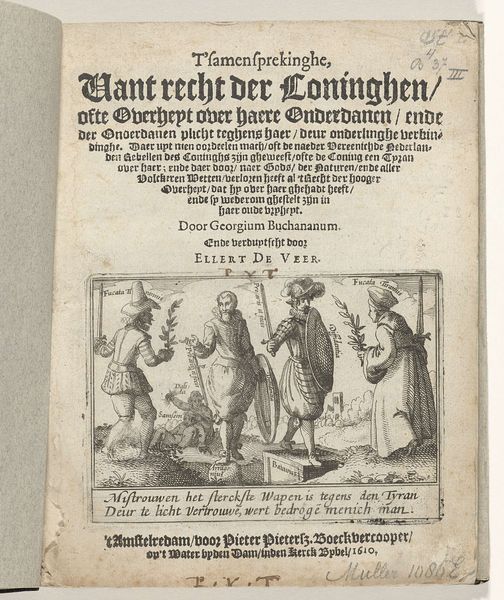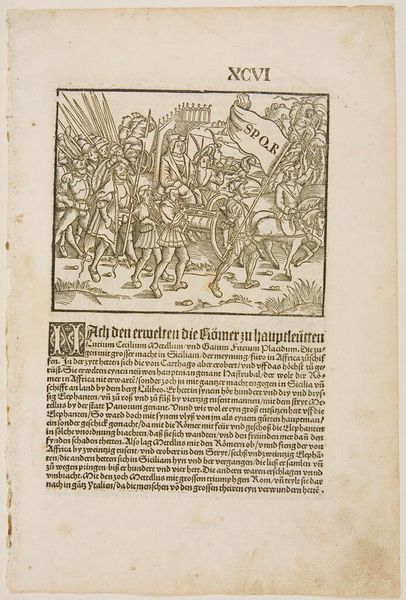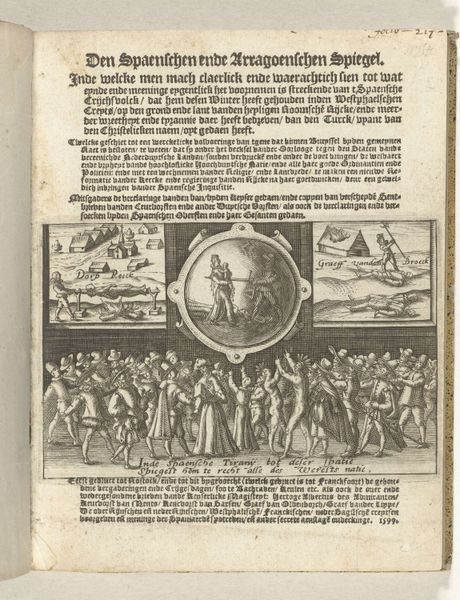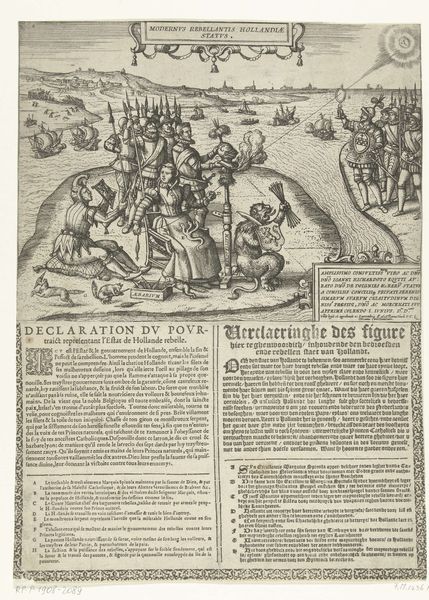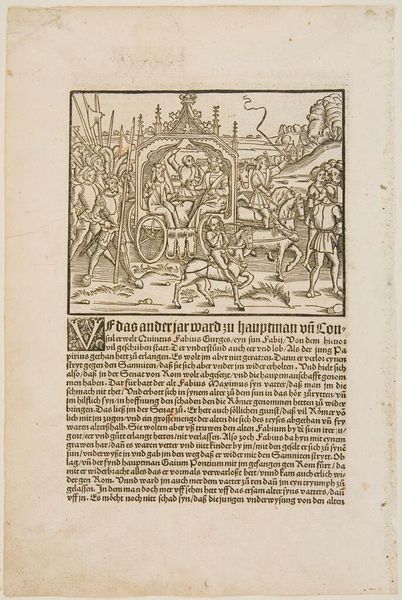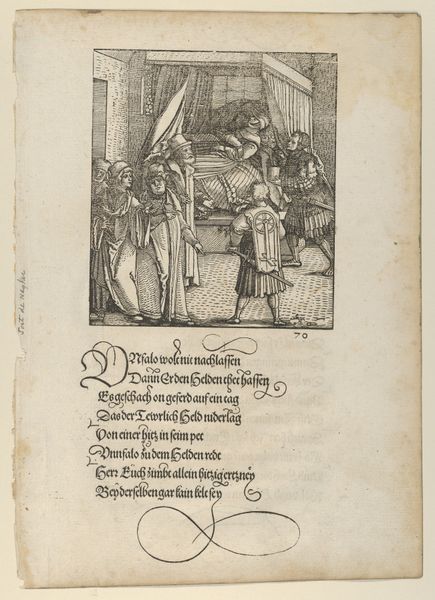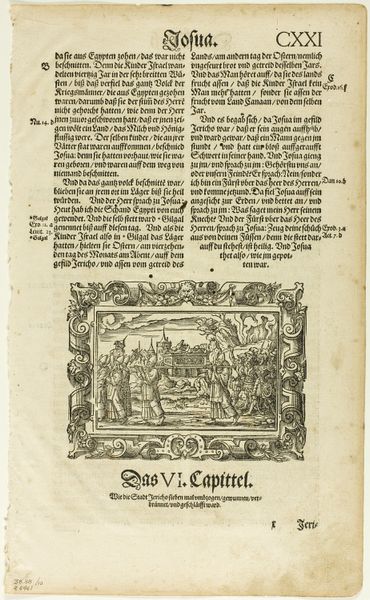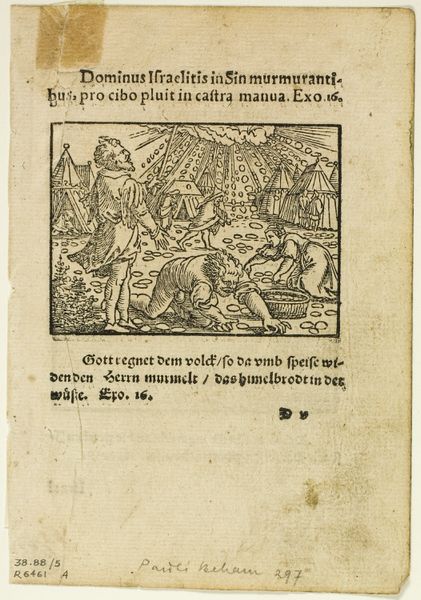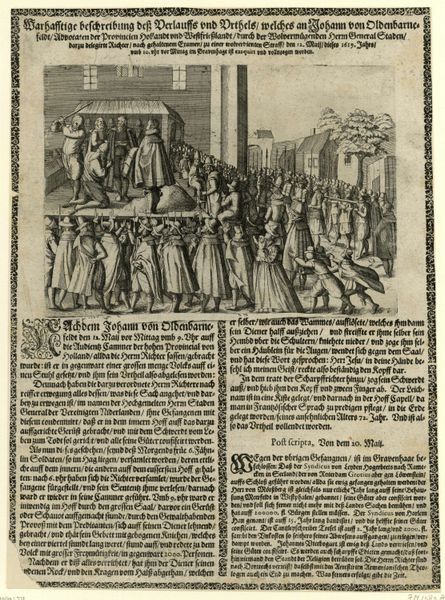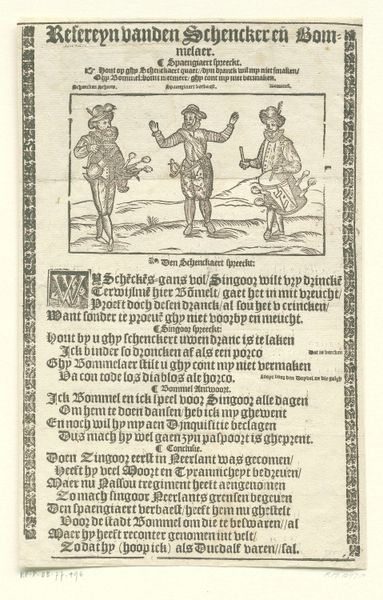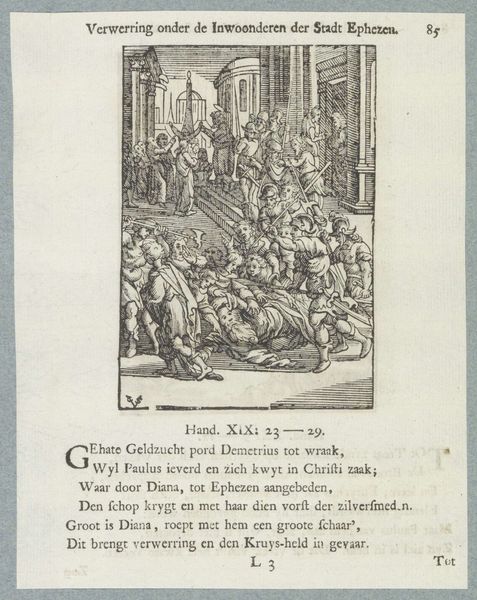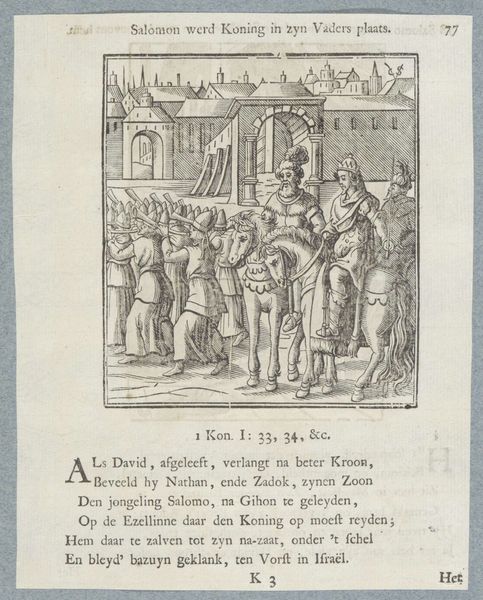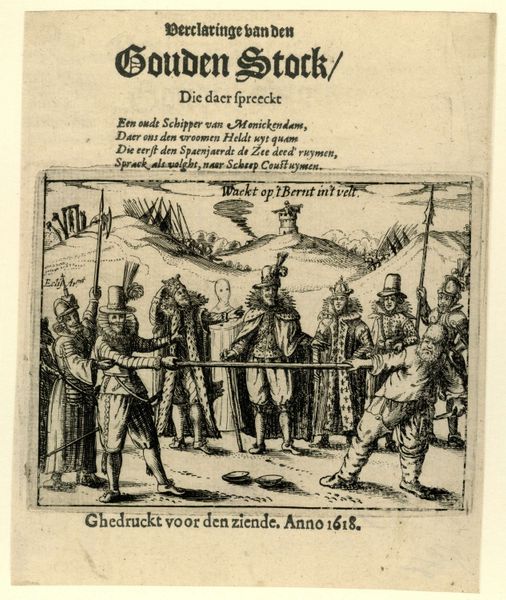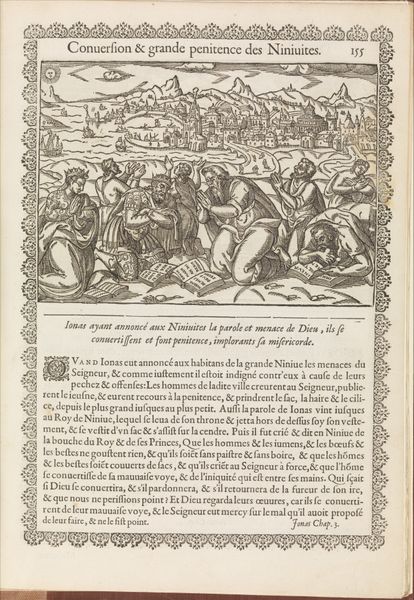
"Prospekt af Consistorio eller Tamper-retten i Kiöbenhavn" 1726 - 1757
0:00
0:00
drawing, print, paper, ink, engraving
#
drawing
#
baroque
# print
#
paper
#
ink
#
genre-painting
#
engraving
Dimensions: 75 mm (height) x 82 mm (width) (plademaal)
Editor: So, this engraving is called "Prospekt af Consistorio eller Tamper-retten i Kiøbenhavn" by Odvardt Helmoldt de Lode, and it seems to date sometime between 1726 and 1757. It's quite detailed, almost like a snapshot of a specific moment. What strikes me most is the number of figures represented; they are nearly all men, and the scene feels very formal and perhaps hierarchical. How do you interpret this work? Curator: That's a keen observation about the predominantly male presence and formality. Considering the historical context, these figures are likely members of the Consistorium, an ecclesiastic court. The print, therefore, isn't just a neutral snapshot. It reproduces power. Who gets a seat at the table – quite literally here? Notice the architecture; it reinforces notions of authority, framing the figures within a system of social control. Have you noticed any other element in terms of representation? Editor: The different ways they occupy the space; those standing versus those seated at the table. There's also a dynamic, or tension between these standing men versus those sitting and overlooking the activity. Curator: Exactly. This reinforces the idea of access and privilege that determined your ability to not only occupy the physical space, but also be included in processes. This piece, though seemingly a simple genre painting, is ripe with implications about social structures and the uneven distribution of authority in 18th-century Copenhagen. Does understanding the work through this intersectional lens alter your initial impression? Editor: It completely transforms my understanding! What I initially perceived as a historical scene becomes a powerful commentary on institutional power. It is much more than a portrait of people in the court; it exposes a biased system, an inside-look into cultural power. Curator: Precisely. Art offers these unique glimpses into historical dynamics, helping us dissect the structures of power and their ongoing effects. I am delighted we have unveiled hidden social constructs by reading this painting together.
Comments
No comments
Be the first to comment and join the conversation on the ultimate creative platform.
